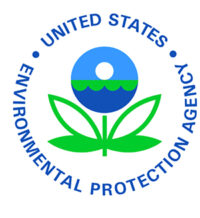EPA announced the final determinations for whether certain areas have met the 2008 or 2015 National Ambient Air Quality Standards (NAAQS) for ground-level ozone, as required by the Clean Air Act. EPA is finalizing determinations regarding the air quality progress of six nonattainment areas classified as “Serious†for the 2008 ozone NAAQS, and for 28 nonattainment areas classified as “Marginal†for the 2015 ozone NAAQS. These final rules establish new timeframes and next steps states must take to improve ozone air quality in remaining nonattainment areas. EPA’s final decisions are based on a scientific evaluation of certified, publicly-available air quality monitoring data for the years 2018 – 2020.
“These determinations are an important step in ensuring that communities across the country have the clean, healthy air quality they deserve, and that areas of the country that are not currently achieving these health-based standards take steps required by law to reduce ozone pollution,†said EPA Administrator Michael S. Regan. “We will continue to work with our state partners to track air quality, reduce air pollution, protect public health and ensure clean air for all.â€
Ground-level ozone is not directly emitted to the air; it forms when pollutants emitted by cars, power plants, a wide range of industries, and other sources chemically react in sunlight. Breathing ozone can cause coughing and a sore or scratchy throat, make it more difficult to breathe, inflame and damage airways, make lungs more susceptible to infection, aggravate lung diseases such as asthma, emphysema, and chronic bronchitis and increase the frequency of asthma attacks. Ozone is most likely to reach unhealthy levels on hot sunny days in urban areas, but it can still reach high levels during colder months. It can also drift long distances and harm air quality in rural areas.
More than 90 million Americans, including those disproportionately burdened by ozone air pollution and other sources of pollution, live in areas that do not meet national air quality health standards for ground-level ozone, or smog. These final actions complement a series of actions EPA is taking to improve air quality and public health under the Clean Air Act. EPA recently proposed stronger standards to reduce pollution from heavy-duty vehicles and engines, and also proposed a federal plan to cut pollution from power plants and industrial sources that significantly contribute to unhealthy levels of smog for millions of Americans who live downwind.
Under the Clean Air Act, EPA must ensure that smog-affected areas meet health-based air quality standards for ozone as quickly as possible. For areas being reclassified – for example, from “Marginal†to “Moderate†or from “Serious†to “Severe†– the Clean Air Act requires that states implement additional measures to protect public health and to submit new plans to demonstrate how the area will attain as quickly as possible. Additionally, many areas across the country have had success with localized tools and approaches to improve ozone air quality. EPA will continue to work collaboratively with its state partners to ensure these measures are implemented to protect clean air for all communities.





